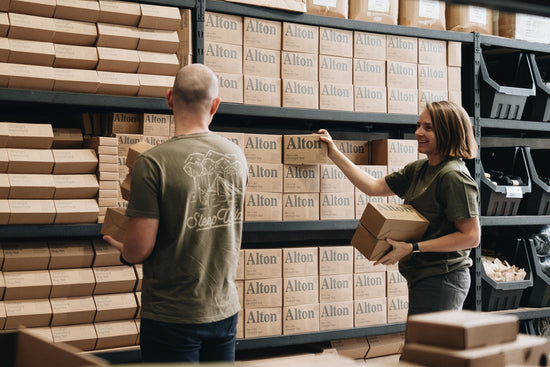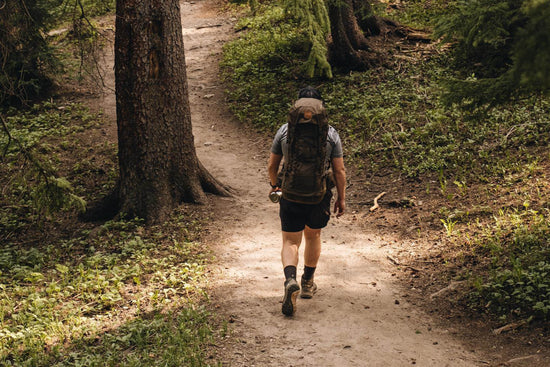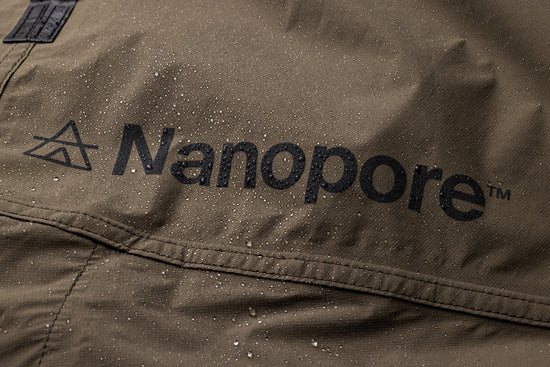Streamline your packing process with a camping storage box
To get the most out of your outdoor adventures, you need to be organised. That starts with having a designated camping storage box. By keeping your hiking supplies in one place, a camping storage box reduces the chances of forgetting essential items. From water-resistant stuff sacks to collapsible camping storage boxes, our range of hiking packing and storage solutions are designed to make your life easier and your adventures better.
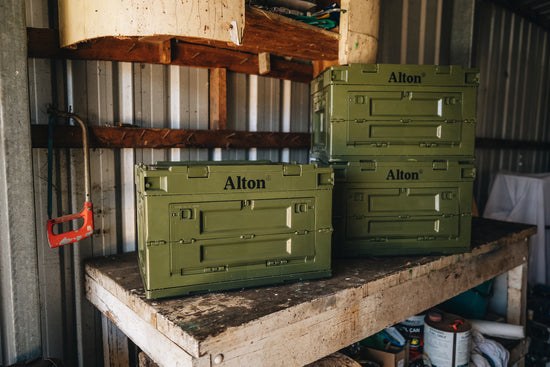
Want a camping storage box built for action? You’ve got it
Pack for action and adventure with our range of fit-for-purpose camping storage solutions. Setting off on an epic overlanding mission? Our multi-use 50L Camping Storage Box is just what you need. With a game-changing 3-door design, you can quickly grab your essential gear without needing to unpack everything. And when you’re done, this collapsible 4WD storage box folds down to a fraction of the size for convenient storage until your next adventure.
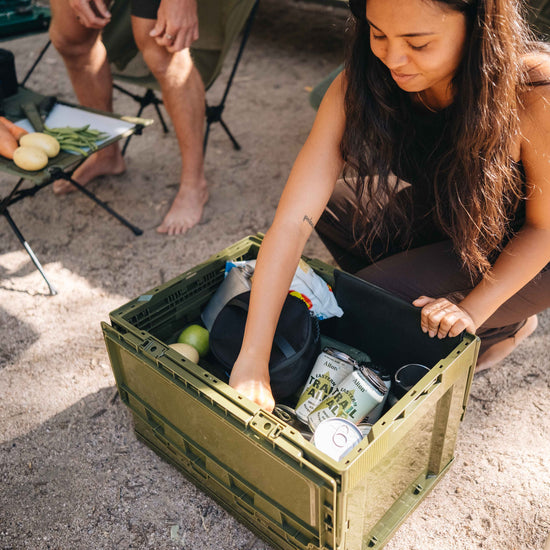
Get packing with our purpose-built gear pouches and stuff sacks
Effortlessly organise and protect your hiking gear in your backpack with our purpose-built Gear Pouches, in ultralight and heavy-duty materials. Our ultralight stuff sack is perfect for things like clothes, hygiene kits or electronics, while our rugged Cordura® Gear Pouches make the ultimate ‘possibilities pouch’ for things like fire-starting supplies, bushcraft tools and cordage. Trust us, these nifty stuff sacks will come in handy in more ways that you can imagine.
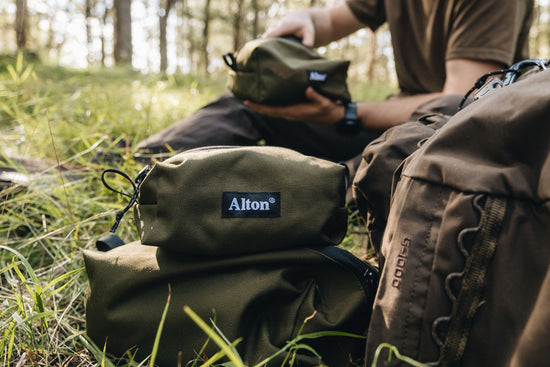
Gear Storage FAQs
-
As any committed adventurer will tell you, packing your backpack for hiking is an artform. You need to be able to carry your gear comfortably over rough terrain and long distances. You need to keep your supplies dry and protected, and ensure that you can quickly and easily access certain items like snacks, rain gear and a map, without having to dig through everything.
And don’t forget weight distribution. That is a very, very important aspect of packing your hiking pack. If you get this wrong, you will feel it – literally. Improper weight distribution can lead to pain in your shoulders, back and neck, and can throw your balance off, making you more susceptible to trips and falls.
So, how do you do all that?
Let’s start from the top – well, actually, from the bottom.
Base Layer
You are going to want to place your lighter, low-use items (think stuff you won’t need until you get to camp, like a hiking sleeping bag and sleeping mat) down in the bottom of your pack.Core Layer
Position your heaviest gear in your pack as close to your spine as you can. This will maintain your natural centre of gravity and ensure your pack is as comfortable as possible to carry. In most cases, that will be food (not including snacks), cooking gear, water reserves and heavy shelter components. You want everything packed in tightly here, so use other items like clothing or lighter shelter components to fill the gaps and hold everything in place.Upper Layer
Once you’ve got your heavy hiking gear in position, now you can add in the supplies that you might need on the go, like lunch, rain gear and your first-aid kit. In cold weather, it is not a bad idea to leave a bit of space here for when you get warm and need to shed some extra clothing layers.Outer Pockets
Most packs have a lot of little pockets to store things in. This is where you want to store small but essential items that you want to be able to access quickly. Snacks, headtorch, GPS or maps, Personal Locator Beacon, toilet paper and a trowel… We suggest giving each item a ‘home’, a.k.a use the same pocket or place for it every trip. This will mean you always know where to find it.All done! Now it’s time to get out there and give it a go in the wild.
Give yourself some time to test, adjust and refine your packing method. Do that, and you’ll be packing like a pro in no time.
-
The best storage box for camping is (as always) the one that meets your needs. Not ours. Not old mate’s on that Facebook forum. Yours.
To figure out what’s the best storage box for camping, asking yourself these questions:
Where are you going to be using your camping storage box?
Keeping your gear organised in your garage won’t require the same level of heavy-duty durability as something you’re hauling to camp in the backcountry. For general use, such as overlanding and car camping trips, accessibility may be a bigger priority for you than durability. If you’re heading out in extreme environments, then look for qualities like hard-core construction, weather-protection and shock-absorption.
What are you storing inside it?
If you're stashing expensive electronics or equipment, then obviously waterproofing is a must. Security can also be an important point to consider, and many purpose-built camping storage boxes have built-in lock mounts. On the other hand, if you’re looking for a 4WD storage box that you can chuck in the back of your vehicle or keep at your base camp, then that will be a different story – features like easy-access and stackability will be far more useful.
How far are you going to be carrying it?
It’s tempting to buy the biggest possible camping storage box – but in most cases this is actually not going to be the most practical solution for camping and outdoor use. Even if you’re just carrying your gear a few metres, you need to be able to safely lift it. In this case, smaller camping storage boxes with a capacity under about 75L will be far more portable. If you’re carrying your hiking supplies over long distances, soft-shell storage boxes can be a good solution.
What’s your budget?
There are camping boxes out there that cost upwards of $500 – no joke. For specialised use, such as for camera equipment or extreme expeditions, this price tag might be 100% worth it, but in most cases, you probably don’t need to spend anywhere near that much to get a high-quality camping storage box for your adventures.
-
Here are the key principles for storing your camping gear effectively:
Clean and Dry Everything
Before storing your gear, always make sure it's completely clean and dry. Any residual dirt and moisture can lead to mould growth and damage your equipment over time.
Don’t Compress It
It is tempting to pack your hiking gear down as small as possible when you’re storing it, but this isn’t going to be great over the long term. Instead, try to store soft items like your tent, sleeping bag and sleeping mat loosely in a cotton or mesh storage sack or even hang them in a closet. Hard items, such as cookware and other accessories, should be packed away in your camping storage box and kept in a dry, cool place away from direct sunlight
Sort Out Your Sh*t
Go through your hiking supplies and make an inventory of everything you have, categorising by type of gear (sleeping, cooking, shelter, etc.). Then, pack away your gear into camping storage boxes and add a label with everything inside so you can find what you need quickly and easily.
Moisture Control
Keep your storage area cool, dry, and well-ventilated to prevent mildew growth in your gear. Consider using moisture absorbers inside your camping storage boxes or closet space if you live in a humid climate.
That’s it! You’re all sorted and stored, ready for your next adventure.
-
Here at Alton, we have something called the All Good Guarantee, a Lifetime Warranty* that protects your hiking gear for as long as you own it. This is our promise to you that all our hiking gear is made to the highest standards of quality and durability. If something doesn’t live up to that standard, we’ll repair or replace it for you.
You can shop our top-selling hiking gear today and see why we’re ranked among the best outdoor stores Australia has on offer. Free shipping for all orders over $100 AUD in Australia and $150 USD in the USA.
For further information on shipping/handling, including international delivery, please visit our shipping information page.
